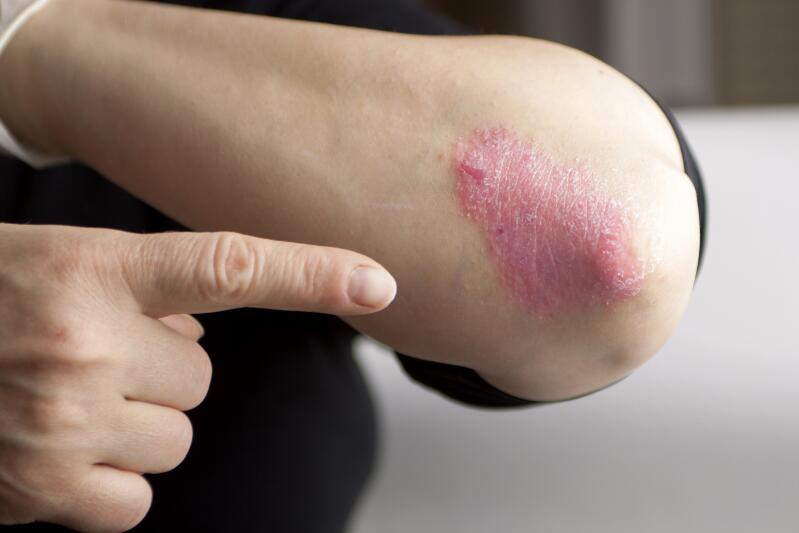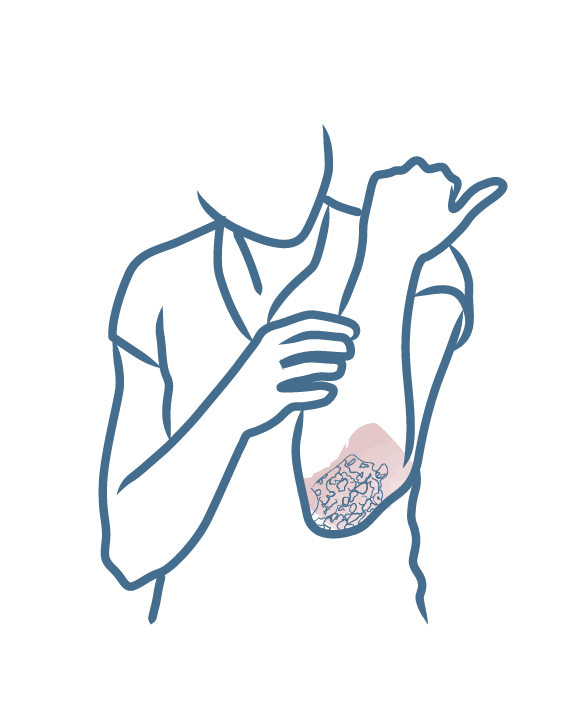-
Your concerns
Our articles to help you gain a better understanding
-
Our solutions
-
Ducray Dermatological laboratories
Our articles to help you gain a better understanding

Psoriasis in its most common form is characterized by the presence of largish, well-defined lesions known as erythemato-squamous plaques: these are red plaques topped by a white layer of dead skin called scales. The peculiar appearance of this red and peeling skin is the result of a physiopathological mechanism involving immune system dysfunction, inflammation and the excess proliferation and maturation of keratinocytes, the skin's main cells.

Summary
Psoriasis plaques are easily recognizable by sight as well as touch, they are thick and rough, unlike the healthy skin surrounding them. But this healthy skin can also become inflamed if exposed to a trigger factor such as friction, for example. It requires as much daily care and attention as inflammatory skin.
Psoriasis plaques are the main symptom of psoriasis and can occur anywhere on the body: the most common areas are the elbows, knees, chest, back, scalp, etc. The face can also be affected: psoriasis plaques are often less well defined here, but the redness and scales are clearly visible.
Psoriasis plaques are associated with strong sensations of heat and discomfort, tingling and especially itching.
Scales are unsightly, but must be treated gently because they are an integral part of the psoriasis plaque.
Psoriasis-prone skin

Skin prone to stubborn dry plaques
NEWSLETTER
Dermatological expertise
To better understand your skin and hair, discover our exclusive content and innovative care products designed to improve your quality of life..